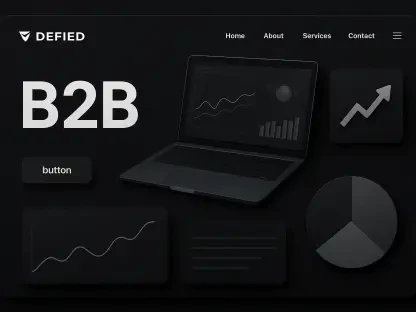Social Media Optimization (SMO) is a pivotal aspect of digital marketing strategy, leveraging the immense power and reach of social media platforms to enhance a company’s message, build the brand, and bolster its online presence. In today’s digital age, where consumers constantly engage with companies via social media, mastering SMO is integral to increasing awareness about new products or services, fostering customer engagement, and mitigating any potentially damaging news. Unlike traditional marketing that often focuses on broad strokes, SMO allows for targeted strategies that can create deeper connections with audiences.
The impact of social media on consumer behavior cannot be overstated. With millions of users actively participating on platforms such as Facebook, Instagram, and TikTok every day, brands now have unprecedented opportunities to interact directly with their target demographics. By constructing a well-thought-out SMO strategy, companies can ensure that their content does not just get lost in the digital noise but instead resonates well with the intended audience, sparking shares and continued engagement. Moreover, tracking the effectiveness of these strategies in real-time allows businesses to fine-tune their approaches, making SMO a dynamic and indispensable part of any comprehensive marketing campaign.
The Role of SMO in Digital Marketing
At its core, SMO involves strategically utilizing social media sites to construct a brand and amplify its online presence. It has emerged as a potent counterpart to search engine optimization (SEO), which primarily focuses on enhancing a website’s visibility on search engines like Google. While SEO is concerned with tweaking website content to secure higher rankings on search engines, SMO centers on crafting compelling, shareable content that channels social media users towards a company’s website for more in-depth information or purchases.
Diverse social media platforms serve unique demographics and offer different advantages for digital marketing. For instance, Facebook attracts a broad range of users, making it ideal for wide-reaching campaigns, whereas Pinterest is particularly effective for visually appealing product presentations. Instagram, with its focus on visual narratives, is excellent for brand storytelling, while X platform (formerly Twitter) excels in real-time engagement and customer service interactions. YouTube serves as an excellent platform for video content, including tutorials, unboxings, and reviews, enabling deeper consumer engagement, whereas TikTok’s short-form video content captures the attention of a younger demographic, driving brand visibility through viral trends. Snapchat, with its ephemeral nature, can create a sense of urgency and exclusivity around promotions and events.
The strategic use of these platforms ensures that a brand can meet its audience where they are, in the format they prefer. Thus, mastering SMO means not just creating content but also understanding the nuances of each platform and tailoring messages to fit the unique characteristics and expectations of the users on those platforms. This targeted approach ensures higher engagement rates, better customer satisfaction, and ultimately, stronger brand loyalty.
Driving Traffic Through Social Media Channels
One of the fundamental strategies of SMO is funneling traffic from social media channels to the organization’s website, where comprehensive details about products, services, or specific campaigns can be found. For instance, a campaign to promote a new vehicle model might employ eye-catching social media posts that guide users to a dedicated webpage listing local dealerships and additional details about the model. By creating a seamless bridge from social media platforms to the company website, brands can ensure a coherent user journey that enhances both awareness and conversion rates.
To manage this process efficiently, companies often turn to various tools that aid in scheduling and organizing content across multiple social media platforms. Tools such as Loomly, Agorapulse, PromoRepublic, Hootsuite, Buffer, and Sprout Social enable marketing teams to maintain a consistent presence, swiftly respond to user engagements like comments or messages, and analyze the performance of their social media efforts. Using these tools, companies can schedule posts during peak engagement times, monitor mentions and hashtags related to their brand, and measure the success of their campaigns through in-depth analytics.
These tools not only simplify the logistical aspects of managing social media but also provide valuable insights that can inform future strategies. By understanding which types of content resonate most with their audience, brands can continually refine their approach, ensuring that their social media presence remains dynamic and effective. Additionally, responding promptly to user interactions fosters a sense of community and trust, reinforcing the bond between the brand and its consumers. Altogether, these elements create a robust SMO strategy that not only drives traffic but also builds lasting relationships with customers.
The Power of Viral Marketing
Creating content that encourages users to share it within their own networks, a technique known as viral marketing, is a significant aspect of SMO. Viral marketing aims to amplify the reach of content by prompting engaged users to distribute it further among their connections, thereby exponentially increasing the overall exposure and potential impact of the campaign. This strategy not only leverages the inherent connectivity of social media platforms but also taps into the power of word-of-mouth marketing, which is often considered more credible and influential than traditional advertising.
SMO also allows for the customization of messages based on demographic and geographic segmentation. This means content can be tailored to resonate more deeply with specific groups. For instance, a soft drink company might market a refreshing beverage to consumers in warmer climates while suggesting that the same drink will remind those in colder areas of warm, summery days. By analyzing data on user behavior and preferences, companies can craft messages that are not only relevant but also evoke a stronger emotional response, leading to higher engagement rates and more shares.
The importance of SMO cannot be overstated in the modern digital landscape, where an overwhelming number of websites compete for attention. Achieving a high visibility ranking through SEO is one strategy, but SMO complements this by engaging users on popular social media platforms and directing them to the company’s website. Together, these strategies create a holistic approach to digital marketing that maximizes a brand’s visibility and engagement across both search engines and social media. Brands that excel in SMO understand the need for compelling, shareable content that not only captures attention but also fosters a sense of community and loyalty among their audience.
Tools and Techniques for Effective SMO
For companies looking to optimize their social media strategies, dedicated tools for content management and viral marketing are crucial. SMO tools such as Loomly, Agorapulse, PromoRepublic, Hootsuite, Buffer, and Sprout Social streamline content scheduling and organization across various platforms. These tools enable marketing teams to maintain a consistent online presence, respond to user engagements promptly, and analyze the effectiveness of their social media efforts. With these tools at their disposal, companies can track performance metrics, measure the success of campaigns, and tweak their strategies based on real-time data.
Employing these tools effectively requires a deep understanding of each social media platform’s unique features and user demographics. For instance, a company might use Instagram for visually-driven storytelling, Pinterest for product inspiration boards, and X platform for real-time updates and customer interactions. By tailoring their approach to each platform, brands can ensure their content resonates with the specific audience they are trying to reach. Additionally, demographic-specific content personalization enhances the impact of social media efforts by making them more relevant to the target audience.
In summary, SMO is all about strategic content creation and distribution tailored to each social media platform’s strengths and user demographics. Deliberate and continuous engagement with users fosters brand loyalty and community building. As SMO techniques evolve with changing digital landscapes, companies that remain agile and innovative in their strategies are more likely to succeed. By understanding the tools and techniques involved in effective SMO, brands can better navigate the complexities of digital marketing and achieve their business objectives.
Successful Examples of SMO Strategies
Social Media Optimization (SMO) is crucial in digital marketing, harnessing the extensive power and reach of social media platforms to amplify a company’s message, develop the brand, and enhance its online presence. In our digital era, where consumers constantly interact with companies on social media, mastering SMO is vital for raising awareness about new products or services, engaging with customers, and addressing potentially damaging news. Unlike traditional marketing that often uses a broad approach, SMO enables targeted strategies to create deeper connections with audiences.
The influence of social media on consumer behavior is immense. With millions of users active on platforms like Facebook, Instagram, and TikTok daily, brands have unparalleled opportunities to connect directly with their target audiences. By developing a thoughtful SMO strategy, companies can ensure their content stands out in the digital noise, resonating well with the intended audience and encouraging shares and ongoing engagement. Additionally, tracking these strategies in real-time allows businesses to fine-tune their approach, making SMO an essential part of any comprehensive marketing campaign.









